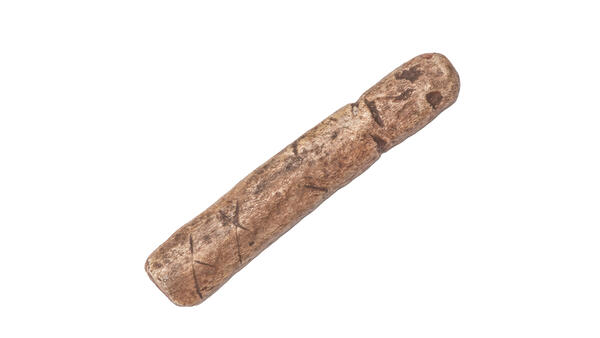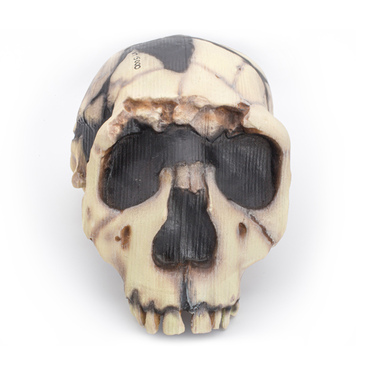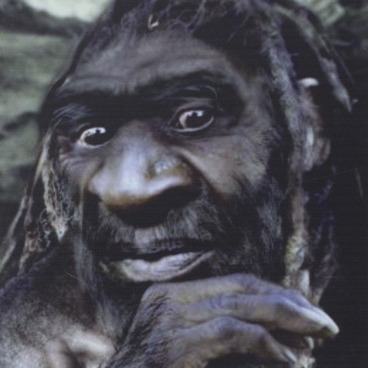A sculpture, created in the Neolithic era (about 4600-7500 years ago), depicting a person is stored at the Regional Museum of Local History. The artifact was found in the 1950s, at the excavations of ancient burials near the city of Irkutsk.
In the burials of the Neolithic era, archaeologists often found zoomorphic sculptures that depicted such animals as elk, bear, fish, birds. Also, they found anthropomorphic figures of human silhouettes. They were made of various materials: stone, bone and horn.
The first anthropomorphic sculptures appeared in the Paleolithic era (10-35 millennia ago). Most often, masters depicted women — in archeology, such images were called ‘Paleolithic Venuses’. Similar figurines have been found in various parts of the world, but scientists have not yet established the exact meaning of these statuettes.
There is an assumption that such sculptures were associated with the cult of fertility and the hearth. According to another version, the anthropomorphic figures might represent the spirit of an ancestor, that is, an idol that attracts prosperity to the family and promotes success in hunting and fishing.
Also, some scientists believed that ancient people could create sculptures as a soul retreat for a deceased relative.
The figurine was donated to the Regional Museum of Local History by Pavel Khoroshih, an archaeologist from Irkutsk. The figure is made of bone, on which the ancient craftsman scratched out facial features: one can distinguish eyes, mouth and nose. The size of the piece is quite small: the length is about six centimeters, and the width is just over one centimeter.
The sculpture was found on the bank of the Kaya River, opposite the Medvedevo village, in 1950. This archaeological site was discovered by the scientist Mikhail Ovchinnikov in 1892. He found fragments of pottery, a horn and part of a skull that belonged to an animal on the site. However, the site was not explored until the 1950s, when Pavel Khoroshih together with his colleague Sergei Filippov went to the Kaisky Mountain for excavations. They have found the burial of a woman and a teenager from the Neolithic era on its southern slope. There was an accompanying inventory in the burial, including a figurine from the museum’s exposition.
In the burials of the Neolithic era, archaeologists often found zoomorphic sculptures that depicted such animals as elk, bear, fish, birds. Also, they found anthropomorphic figures of human silhouettes. They were made of various materials: stone, bone and horn.
The first anthropomorphic sculptures appeared in the Paleolithic era (10-35 millennia ago). Most often, masters depicted women — in archeology, such images were called ‘Paleolithic Venuses’. Similar figurines have been found in various parts of the world, but scientists have not yet established the exact meaning of these statuettes.
There is an assumption that such sculptures were associated with the cult of fertility and the hearth. According to another version, the anthropomorphic figures might represent the spirit of an ancestor, that is, an idol that attracts prosperity to the family and promotes success in hunting and fishing.
Also, some scientists believed that ancient people could create sculptures as a soul retreat for a deceased relative.
The figurine was donated to the Regional Museum of Local History by Pavel Khoroshih, an archaeologist from Irkutsk. The figure is made of bone, on which the ancient craftsman scratched out facial features: one can distinguish eyes, mouth and nose. The size of the piece is quite small: the length is about six centimeters, and the width is just over one centimeter.
The sculpture was found on the bank of the Kaya River, opposite the Medvedevo village, in 1950. This archaeological site was discovered by the scientist Mikhail Ovchinnikov in 1892. He found fragments of pottery, a horn and part of a skull that belonged to an animal on the site. However, the site was not explored until the 1950s, when Pavel Khoroshih together with his colleague Sergei Filippov went to the Kaisky Mountain for excavations. They have found the burial of a woman and a teenager from the Neolithic era on its southern slope. There was an accompanying inventory in the burial, including a figurine from the museum’s exposition.



